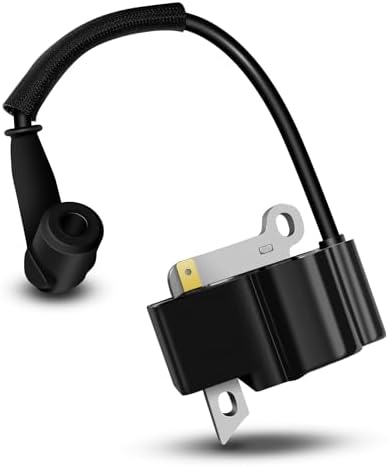Stihl backpack sprayers are workhorses for professionals and serious hobbyists alike, offering powerful, efficient application of pesticides, herbicides, and fertilizers. But even the best equipment needs proper calibration for optimal performance and to prevent over- or under-application. This guide dives deep into the process, explaining why precise calibration is crucial, walking you through the steps, and offering comparisons with competing brands. Let’s get started!
Why Calibration Matters: More Than Just a Number

Proper calibration isn’t just about getting the right amount of spray; it’s about responsible application, environmental protection, and maximizing your efficiency. Over-application wastes product, costs you money, and can potentially harm the environment. Under-application renders your treatment ineffective, wasting time and effort. Accurate calibration ensures you apply the recommended dosage, protecting your target area and preserving resources.
Understanding Your Stihl Backpack Sprayer: Engine Options and Torque

Stihl offers a range of backpack sprayers, each with varying engine options and capabilities. While Stihl doesn’t explicitly advertise “torque” in the same way you might see with a power tool, the engine’s power and displacement directly impact the sprayer’s ability to maintain consistent pressure and flow. A more powerful engine with higher displacement translates to better performance in tackling thicker solutions and larger areas. You’ll find information about engine specifications – such as cubic centimeter displacement (cc) and horsepower (hp) – in your sprayer’s manual or on Stihl’s website.
While precise torque figures aren’t provided, the engine’s power determines the effectiveness of the pump. A higher-powered engine can handle the pressure demands of different nozzle types and spraying conditions more effectively. This is especially important when tackling challenging terrain or dealing with thicker, more viscous solutions.
Calibration Steps: A Practical Walkthrough
Calibrating your Stihl backpack sprayer is a straightforward process. However, precision is key. Here’s a step-by-step guide:
- Choose Your Nozzle: Select the nozzle appropriate for your application. Different nozzles produce different spray patterns (cone, flat fan, etc.) and flow rates. Your Stihl sprayer manual will detail the different nozzle options and their specifications.
- Measure Your Spray Swath: Mark a precisely measured area, typically 10-20 feet long, depending on the nozzle you are using. This is the area your sprayer covers with each pass.
- Collect and Measure the Spray: Position a container (like a graduated cylinder) at the end of your marked area, ensuring the container is fully within the spray path. Spray your test area and measure the amount of liquid collected in the container.
- Calculate Application Rate: Now the math comes in. Let’s say you collected 1 liter of solution in your 10ft test area. To calculate the application rate per acre (or hectare, depending on your measurement system), you need to know the conversion rate. A good online conversion tool or your sprayer manual can assist you with this step.
- Adjust as Needed: Compare your calculated application rate to the recommended rate for your product. If the rate is too high, adjust your sprayer’s pressure or nozzle to reduce the output. If it’s too low, do the opposite. Repeat steps 3 and 4 until you achieve the desired application rate.
- Regular Calibration Checks: Check your calibration regularly, especially after changing nozzles, cleaning the sprayer, or if you notice a change in spray pattern or application rate.
Stihl vs. Competitors: A Quick Comparison

Stihl backpack sprayers stand out for their robust build quality, powerful engines, and generally efficient performance. However, they’re often positioned at a higher price point than some competitors. Brands like Solo, Field King, and Chapin offer more budget-friendly options. The key differences often lie in engine power, tank capacity, and overall durability. While the cheaper brands may suffice for smaller yards or occasional use, Stihl’s durability makes it a worthwhile investment for frequent and demanding applications.
It’s crucial to compare features beyond just price. Consider factors like tank size (important for large areas), nozzle adjustability (for varying needs), and the overall comfort of the backpack harness. A comfortable sprayer is essential for preventing fatigue during prolonged use.
Practical Advice for Users
Here are some practical tips for maximizing your Stihl backpack sprayer:
- Regular Maintenance: Clean your sprayer thoroughly after each use to prevent clogs and ensure longevity. This includes cleaning the tank, nozzles, filters, and pump.
- Proper Mixing: Always follow the product label instructions for mixing the solution. Incorrect mixing can lead to ineffective application or damage to your sprayer.
- Understand Your Nozzle Types: Familiarize yourself with the different nozzle types and their spray patterns. Choose the nozzle that’s best suited for the task at hand and the terrain.
- Wear Protective Gear: Always wear appropriate protective clothing, including gloves, eye protection, and a mask, when handling pesticides and herbicides.
- Check for Leaks: Regularly inspect your sprayer for leaks. Address any leaks promptly to prevent spills and ensure efficient application.
Conclusion: Mastering Your Stihl Backpack Sprayer

Properly calibrating your Stihl backpack sprayer is essential for effective and responsible application. By following the steps outlined above and utilizing the provided advice, you can ensure your sprayer delivers consistent results, saves you money, and protects the environment. Remember, regular maintenance and careful attention to detail are crucial for maintaining optimal performance and maximizing the lifespan of your valuable investment.


